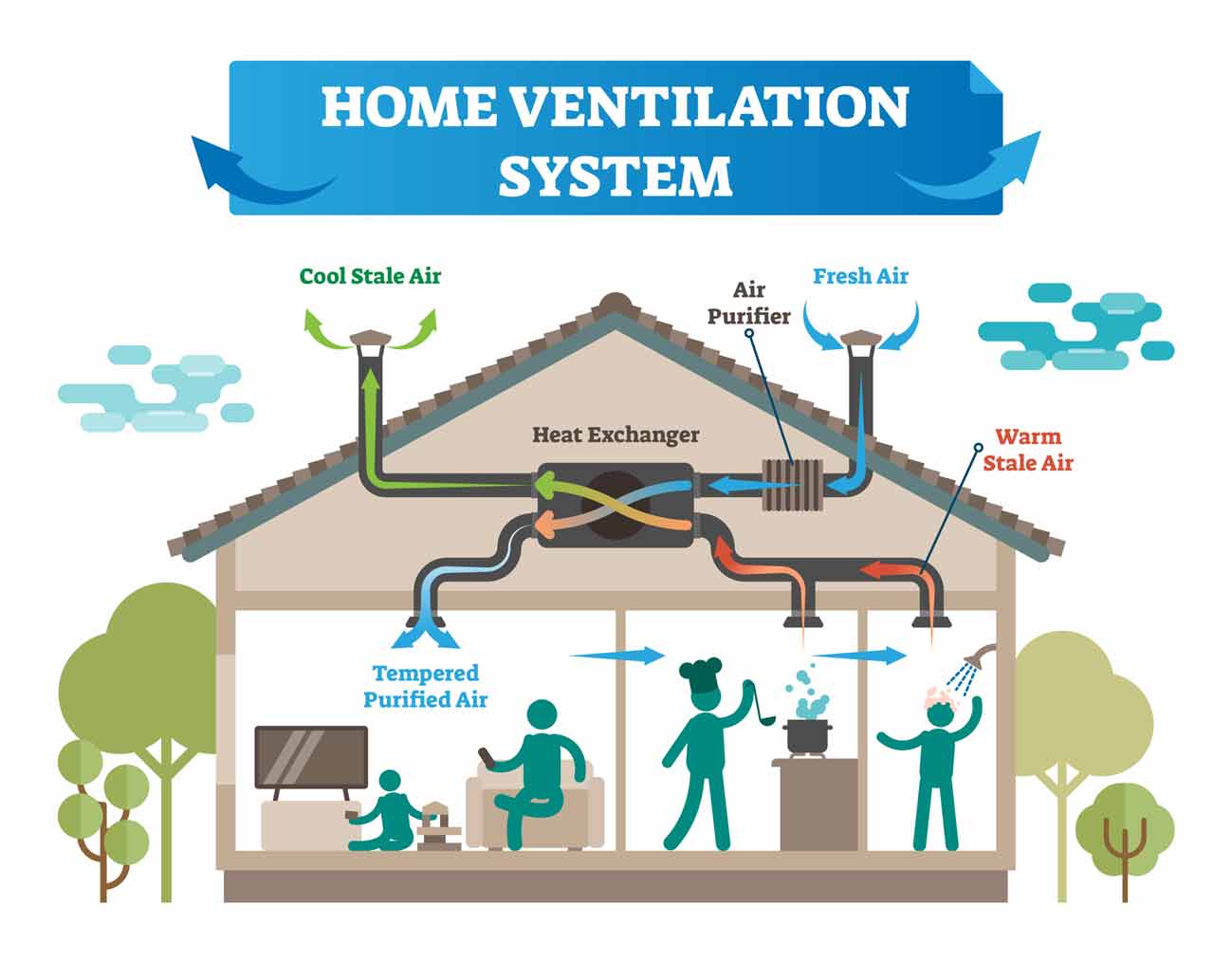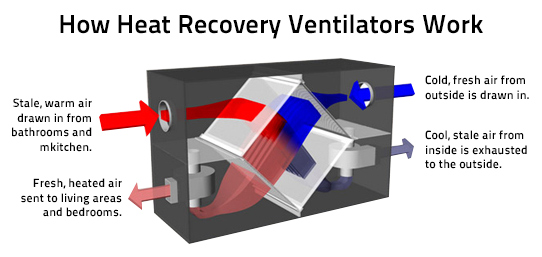The All-Inclusive Guide to the Uses of Heat Recovery Ventilation in Modern Buildings
Heat Recovery Ventilation (HRV) systems stand for a substantial development in constructing modern technology (HRV Heat Recovery Ventilation). They give a method for exchanging stale indoor air with fresh outside air while reducing power loss. This approach not just enhances interior air high quality yet likewise adds to power performance in both property and commercial structures. Comprehending the various applications and benefits of HRV can disclose its essential function in modern-day style and sustainability efforts. The ramifications of this innovation deserve discovering additionally
Understanding Heat Recovery Ventilation Solutions

Numerous contemporary structures focus on energy performance, comprehending warm recovery air flow (HRV) systems is vital for maximizing interior air top quality and lowering energy consumption. HRV systems work by transferring heat from stagnant indoor air to inbound fresh air, properly preserving comfy indoor temperatures while lessening power loss. These systems include a heat exchanger, fans, and ductwork that assist in the blood circulation of air. During wintertime, HRV devices capture and reuse warm from the outgoing air, while in summer season, they can aid cool down incoming air. By constantly exchanging air, HRV systems additionally minimize humidity and the focus of indoor pollutants. Correct installation and maintenance of HRV systems are important for their efficiency and efficiency in boosting total structure performance and comfort.
Benefits of Heat Recovery Ventilation
Heat recovery ventilation systems supply many benefits that enhance both power effectiveness and indoor air top quality in modern-day structures. By capturing and recycling power from exhaust air, these systems greatly reduce cooling and heating expenses, resulting in reduced power consumption. Additionally, they maintain a stable flow of fresh exterior air, minimizing the threat of indoor air pollutants and allergens. This constant exchange helps control moisture levels, stopping mold and mildew growth and guaranteeing a healthier living atmosphere. Furthermore, HRV systems add to sustainability objectives by lowering overall carbon footprints. Their capability to enhance air flow without sacrificing thermal comfort makes them a valuable enhancement to contemporary structure style, promoting both financial and ecological advantages.
Applications of HRV in Residential Structures
As homeowners significantly prioritize energy efficiency and indoor air top quality, the applications of heat healing air flow (HRV) systems in domestic structures have actually come to be more widespread. HRV systems are specifically helpful in firmly secured homes, where maintaining fresh air flow is crucial for avoiding moisture buildup and indoor contaminants. They successfully move warmth from outgoing stale air to inbound fresh air, reducing energy costs linked with heating and air conditioning. Furthermore, HRVs can boost convenience degrees by regulating humidity and temperature. They are likewise adaptable for numerous household styles, including single-family homes and multi-unit buildings. On the whole, incorporating HRV systems article source supports lasting living methods while making certain a healthier interior setting for passengers.
HRV in Business and Commercial Setups
In commercial and industrial setups, the application of warm recovery air flow (HRV) systems has actually come to be progressively essential for optimizing energy performance and keeping air top quality. These systems properly move heat from exhaust air to incoming fresh air, minimizing the requirement for added home heating or cooling. This not only decreases power costs yet likewise contributes to sustainability efforts. Industries such as manufacturing, warehousing, and workplace structures benefit significantly from HRV systems, as they assist control temperature and humidity helpful site levels, guaranteeing a comfy and productive atmosphere. HRV systems aid in eliminating impurities and excess wetness, boosting indoor air high quality. As regulations around air high quality become stricter, the adoption of HRV technology is likely to grow, making it a critical component of modern commercial and commercial framework.
Future Fads in Heat Recovery Ventilation Modern Technology

Often Asked Questions
How Does Heat Recovery Ventilation Impact Indoor Air High Quality?
Heat recovery ventilation considerably enhances interior air top quality by continuously exchanging stale indoor air with fresh outside air while recovering energy. This procedure lowers contaminants, maintains suitable humidity degrees, and ensures a healthier atmosphere for occupants.
Can HRV Solutions Be Installed in Existing Structures?
HRV systems can undoubtedly be installed in existing you can try here buildings. Retrofitting might need adjustments to ductwork and ventilation layouts, however it substantially improves energy efficiency and interior air quality, making it a practical option for older frameworks.
What Maintenance Is Needed for HRV Systems?

Exist Certain Climates Where HRV Is More Effective?
Heat recovery ventilation systems are specifically reliable in environments with substantial temperature level distinctions in between periods. These systems enhance energy efficiency by recuperating warmth from exhaust air, making them optimal for both chilly and reasonably warm environments.
How Do HRV Solutions Affect Power Bills?
